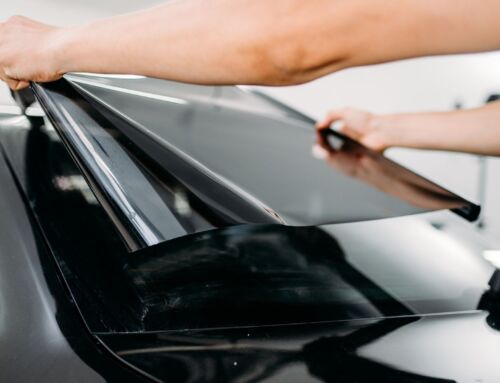As a vehicle owner, one essential aspect to consider is ensuring that your car provides the best comfort while simultaneously protecting your investment.
One common practice among vehicle owners is window tinting, which involves applying a thin laminate film to the car’s windows. Window tint film serves multiple purposes, including reducing heat and sunlight entering the vehicle and enhancing privacy and security.
While there are various types of window tints available on the market, carbon and ceramic tints have gained significant popularity. Understanding the different window tints between these two options can help you make an informed decision when choosing the best car tint for your ride.
Carbon vs Ceramic Car Window Tint
Before diving into the specifics of carbon and ceramic tints, it’s important to understand the basics of car window tinting.
What is Carbon Tint?
Carbon tint is a type of window tint that contains carbon particles. These particles are blended into the film to provide superior heat rejection compared to other types of tints. Carbon fiber tint offers a sleek finish and does not interfere with cellular signals, making it a popular choice among car owners. It also provides a certain level of privacy and glare reduction.
Carbon tint is composed of carbon particles and does not contain any metallic components, making it safe and durable. It blocks a high percentage of solar energy, making it more effective than metallic tints in terms of heat reduction. Overall, carbon tint is a cost-effective option that provides good heat rejection properties and a stylish appearance.
What is Ceramic Tint?
Ceramic tint utilizes ceramic particles in its composition. These particles are non-conductive and non-metallic, making ceramic tint a premium choice for window tinting. Ceramic tint offers excellent heat rejection capabilities, blocking a significant amount of solar heat and infrared light. It also provides superior UV protection and glare reduction.
Ceramic tint is known for its durability and does not fade over time. It offers a clear and unobstructed view from the inside of the car while maintaining privacy from the outside. While ceramic tint is more expensive than other types of window tinting, its benefits and long-lasting performance make it a worthwhile investment for car owners looking for the best quality and performance.
Comparing Carbon & Ceramic Tint
Now that we have explored the basics of car window tinting and understand the properties of window tint options, let’s take a deeper look at the difference between carbon and ceramic tint.
Durability and Longevity
Both types of tints offer superior durability compared to other types of tints or unprotected windows, but ceramic tint outperforms carbon tint.
- Ceramic tint has ceramic particles in the film providing superior performance and resistance to fading, cracking, and peeling over time
- Carbon tint is still durable and provides good performance, but it may not last as long as ceramic tint.
Heat Rejection Capabilities
Both carbon and ceramic tints significantly reduce the amount of heat entering the car, however, ceramic tint tends to have a slight edge in this area.
- Ceramic window film offers better heat rejection capabilities, blocking up to 94.9% of solar heat. Ceramic tint also offers superior performance in blocking infrared light and harmful UV rays, which contributes to heat buildup in a vehicle.
- Carbon window tint provides good heat rejection and can keep the car’s interior cooler. Carbon tint blocks up to 40% of solar heat, giving it an advantage over normal car windows.
Clarity and Visibility
Both carbon and ceramic tints are designed to provide a clear view from the inside of the car by reducing glare, especially during the daytime, although ceramic tints are generally better in this department.
- Ceramic tinting offers excellent clarity and visibility, without compromising on glare reduction.
- Carbon tint may create glare and haze, affecting visibility to some extent.
Signal Blocking
In terms of signal blocking, ceramic tint tends to be more signal-friendly compared to carbon tint.
- Ceramic tint offers excellent clarity and visibility, without compromising on glare reduction.
- Carbon tints are often used in combination with metallic tint and can cause signal interference.
Cost Comparison
When considering the cost of car window tint, it’s important to compare the initial cost and the long-term investment. While ceramic window tint tends to be more expensive upfront, it offers better durability and performance over time.
- Ceramic window tinting is known for its durability and longevity, making it a more expensive upfront cost but a better long-term investment.
- Carbon tints are a more affordable type of car window tints, though they may require more frequent replacement.
The Verdict
Understanding the nuances between carbon and ceramic tints is essential for making an informed decision about your car window tinting. Each type of window film has its unique benefits and drawbacks, from durability and heat rejection capabilities to clarity and visibility. Consider factors like initial cost, long-term investment, and legal compliance before choosing the best tint for your vehicle.
Whether you prioritize premium quality or budget-friendly options, selecting the right tint can enhance comfort, privacy, and even security. Make an educated choice based on your preferences and needs to enjoy the benefits of tinted windows.




